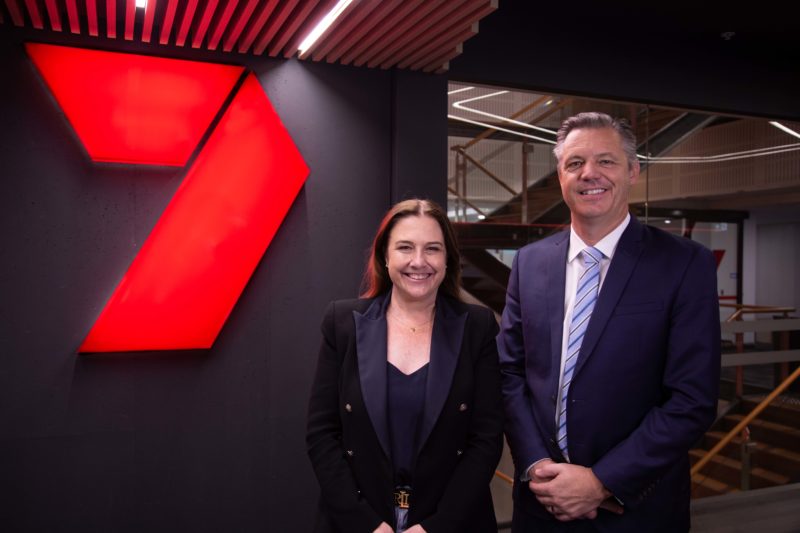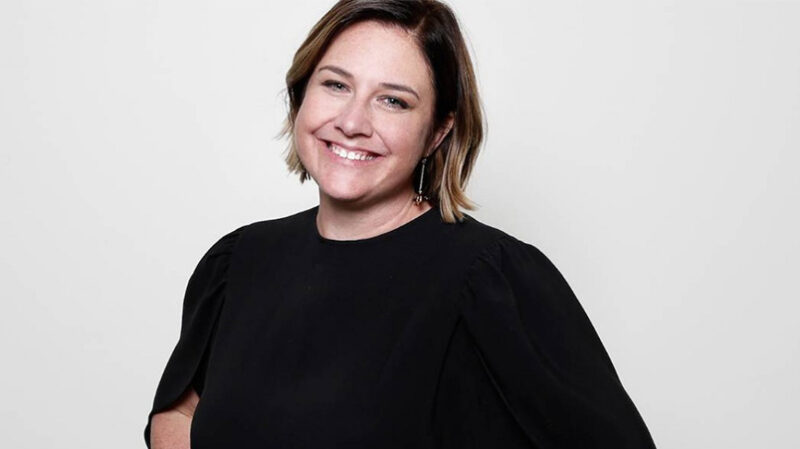Next-day TV ratings model is ‘a dinosaur that belongs in a museum’, Seven’s marketing boss says
In this compelling opinion piece, Seven's chief marketing and audience officer Melissa Hopkins takes aim at the "crazy obsession" with the archaic overnight TV ratings model and calls "bullshit" on more accurate audience figures being ignored.
It was a long time coming, but the arrival of next-day VOZ data on 1 May was a really big deal for everyone in the media and marketing world.
For the first time, we have a true picture of audiences and true reach across all screens. That’s a real game changer.
The arrival of the new VOZ data also highlighted, yet again, that next-day linear audience numbers are a dinosaur, and seriously deserve to be in a museum.
What do you think? Share your opinion in the comments at the bottom of the piece.

Melissa Hopkins joined Seven three months ago.
They don’t tell the whole story and haven’t done for many years, ignoring how people actually consume content.
As a marketer I have always found it rather odd that we are happy to purchase total reach and impressions in a digital world on platforms such as YouTube, yet there is crazy obsession with overnight viewing in capital cities only for TV.
I also know as a marketer that some of my ad placements won’t always have strong reach in the moment, but over the period of a week it will all even out. Surely a more transparent and consistent set of measurement gives us the real truth.
Sure, some people still watch programs when the networks put them to air on their traditional channels. And some content is still “appointment viewing”, like breakfast TV, the 6pm news and big live sporting events.
But as we’ve known for some time now, an ever-growing number of people are watching content when and where they want, on mobile phones, laptops, tablets and so on. VOZ is a world-leading system to capture that viewing in its totality, a system that is audience-first in that it actually reflects what audiences are doing, and a third-party verified chance to demonstrate the true national reach and attention TV still holds.
I’m a new kid on the TV block, having started at Seven in early March. Coming from Optus, I was well aware of the legacy audience measurement data the TV networks were still clinging to and the promise of VOZ.
What I didn’t fully appreciate was how detailed and deep the VOZ data is, and how powerful it is to finally have strong, accurate cross-platform broadcast TV and BVOD reach and frequency information.
Having not worked at a TV network before, I also didn’t fully appreciate the fight it has been to get overnight VOZ data launched and – just as importantly – the barriers that are still in place to making it the only audience data we focus on and talk about.
Right now, TV audience measurement data is a state of flux, at least in terms of how the numbers are being reported by the media (don’t forget that the media play an important role in how the performance of individual networks and shows is perceived by people outside the media buying world).
The bottom line is that as long as the TV industry keeps pumping out linear overnight ratings data publicly, VOZ will never be the only thing reporters focus on. And that is a big shame.

The “crazy obsession” with overnight ratings needs to end, Hopkins says.
The next-day VOZ data is national and rich. It creates one national dataset for marketers and agencies. It reveals, for the first time, the incremental audience watching only on BVOD. And above all, it shows how many people are actually watching TV content, regardless of the device.
As a viewer, I don’t care what device I’m holding or sitting in front of – I’m there for the content, not the delivery mechanism.
In theory, the archaic linear overnight ratings reports will be ancient history by early next year and national VOZ audience information will be the only data out there.
We need to focus on national audience data.
It’s important from a commercial point of view because so many marketers buy national campaigns. It’s important from a perception and media point of view because it shows the real reach and impact of TV content.
Why lead with the smallest number? Why not make the sceptics realise that the content reaches and engages with big audiences, seven days a week, 52 weeks a year, year in, year out?
And why let people assume the streamers attract big audiences? Maybe they do, maybe they don’t. Who would know, as they don’t release audience numbers. That is, of course, their prerogative.

My point is that as an industry, we should be shouting from every single rooftop about how many people our content reaches, the engagement and connections it creates, and the amazing and enduring role it plays in Australian conversations and Australian culture.
I would challenge even the big digital players, who attract much a larger marketing spend than television, to be able to compete with the Australian reach and engagement one TV program can provide based on what VOZ is showing.
Seven, for example, reaches about 16 million people a week across all our platforms. 7NEWS alone reaches about 2.3 million people every night.
In my 12 weeks as a TV executive, I’ve heard the squabbling between some people about what VOZ data should and shouldn’t be released, and in what form, and at what time of day, and to whom.
It’s bullshit. It’s dumb. It’s head-in-the-sand thinking. And it isn’t doing any of us any favours.
I’m genuinely excited about VOZ. It’s independent. It’s credible. It’s world leading. It is a single source of truth for the industry and for the people reporting on the industry.
Now, as an industry, we all need to get out of the weeds we have grown, put aside any short-sighted views we have about what should be released, and focus on the big picture. It’s a bright picture.

Melissa Hopkins in Seven’s chief marketing and audience officer.

Interesting point re national tv market. Out of curiosity Mel… when you were at Optus did you buy TV nationally? Or did you treat metro and regional audiences differently?
User ID not verified.
Lots of valid points around the strength of FTA content from a total audience perspective but while the networks continue to sell the linear spot and the BVOD spot separately the linear overnights will continue to be an important metric. If I bought a linear spot then how many people watched in BVOD is irrelevant to me
User ID not verified.
Interesting the network with the highest proportion of viewers aged over 65 talking about dinosaurs! Yes, we should be able to look at national figures – but linear TV is still bought by market and BVOD is bought separately apart from sponsorships. So what’s the point of looking at Total TV figures now? Overnight ratings are hugely important for short-term marketing KPIs and quick reach generation is a huge benefit of linear TV so beware of throwing out one of your USPs.
User ID not verified.
Pot kettle talking about dinosaurs. Thinking about TV as purely FTA programming is ridiculously outdated with connected TV household penetration and viewing.
User ID not verified.
Talk about dinosaurs.
The TV ratings are primarily produced as an indicator of how many people will see an ad in a TV program (reporting the ‘average minute’), rather than a fleeting few digital seconds, to provide a basis for the likely number of people within a demographic will be exposed to the ad.
You only need to look at the early VOZ data to see that the National BVOD is very small. Further, the BVOD is a cumulative number – 1 day, 7 days, 28 days (if you are patient). So If you are brand-building, despite BVOD’s small size, it may be useful. But if you are a retailer trying to sell products or services right now in this tight economy … forget it.
So the reason it is ‘archaic’ is because it represents the average audience of ‘yesterday’ on the following day, rather than some aggregation of ‘impressions’ across a month .. which some may consider, shall we say, somewhat like a museum.
User ID not verified.
Good article, and I think change is inevitable. Interesting how the media, who control the 24 hour spin cycle, with gotcha moments, aren’t too keen to have their own analytics analysed in the same period.
Just saying
User ID not verified.